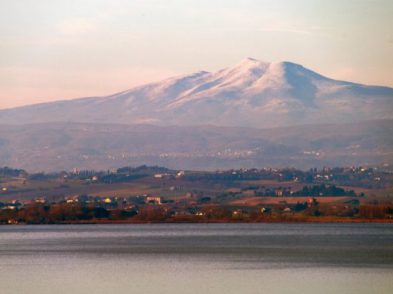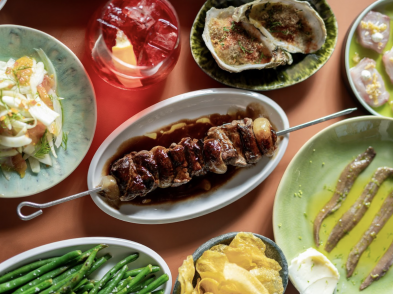Fifty years ago, Helga Guinness met an Italian woman at a bus stop on a Greek island and mentioned she was looking for a house. A few months later, Guinness received a telegram: a deposit had been made in her name on a simple farmhouse near the Maremma coast. Guinness bought the property, and in time her family bought another home in Italy, Castello di Montepò, a vast fortress in need of restoration. By that time, Guinness’s step-granddaughter, Charlotte Horton, a journalist working for Vogue in London, was ready to leave her career and move to Tuscany to renovate the castle and plant vineyards.
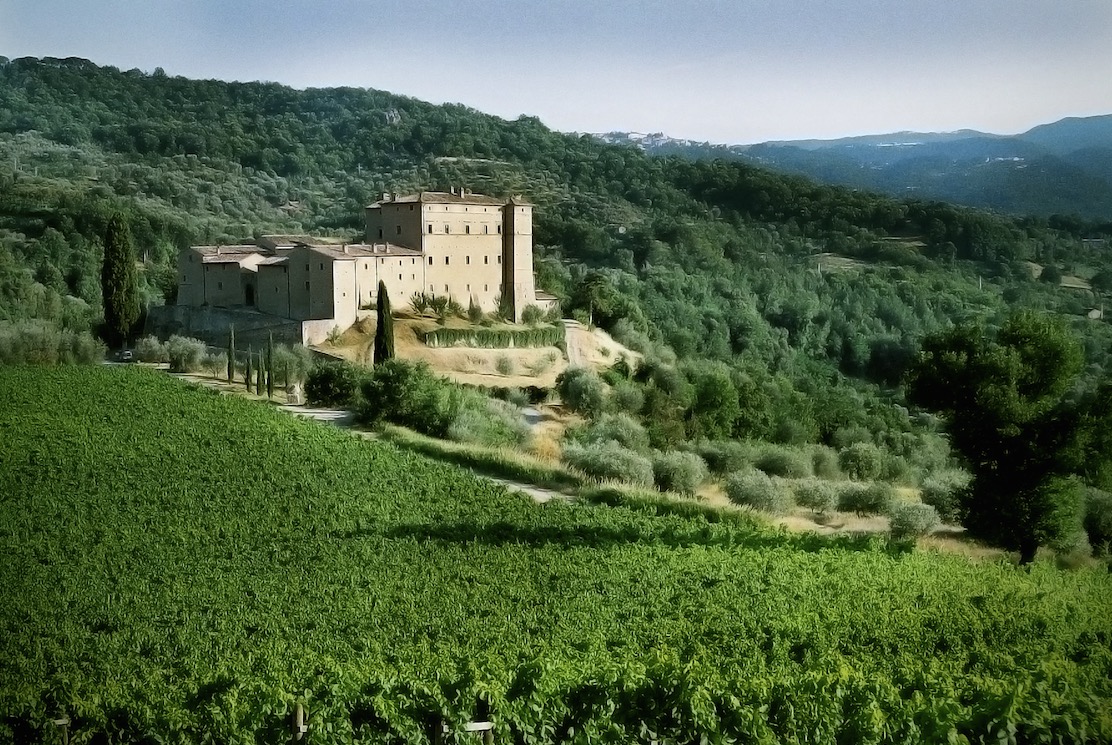
Ten years later, while looking through an old guidebook, Horton found another smaller castle, also in ruins: Castello di Potentino, further inland, “in the fold of” the volcanic Monte Amiata. After a year of negotiations with the castle’s 22 owners, the property was hers, and over the next five years, Horton had the castle restored and four hectares of vineyards planted. By 2009, her wines had been featured in Nicolas Belfrage’s The Finest Wines of Tuscany and Central Italy, and in 2013 Horton was nominated for the Barclays Women of Achievement Award for her accomplishments: restoring two castles; making award-winning wines; working with World Wide Opportunities on Organic Farms, which connects volunteers with organic farmers; and fighting to protect the countryside around Monte Amiata, against plans for geothermal plants.

Emily O’Hare: How old is the castle? What was it that you drew you to Potentino?
Charlotte Horton: It probably has Etruscan foundations, and the first written document to mention it dates from 1042. But its most extraordinary characteristic is that it is still in its original landscape. The surrounding valley is completely unspoilt. This means we have no spraying of pesticides or herbicides and a subsequently profuse amount of birds, wild flowers, insects, fruit trees, olives, vines. It really is a magic valley.
EOH: What was it that made you give up your career? Was there a moment that prompted you to decide, “Right! I’m off?”
CH: I got bored of seeing the same people at parties. I had the chance to go and restore a Renaissance castle in Tuscany. Who wouldn’t have leapt at that?
EOH: What was it like seeing Castello di Potentino that first time?
CH: It was like walking into Jean Cocteau’s film, Beauty and the Beast.
EOH: You began making wine at your family’s previous estate in the Maremma (Montepò, now owned by Jacopo Biondi Santi). Do you remember how that first wine smelled and tasted?
CH: That first commercial vintage was in 1995. What hooked me was the realisation that wine was a liquid expression of place and someone’s relationship with that and the plant.
EOH: How did you learn to make wine? Were you always green fingered?
CH: I learned how to make wine off some local old guys and I had a coup de foudre (with winemaking not the old guys). I was a city girl, a London girl, not green fingered, but curious.
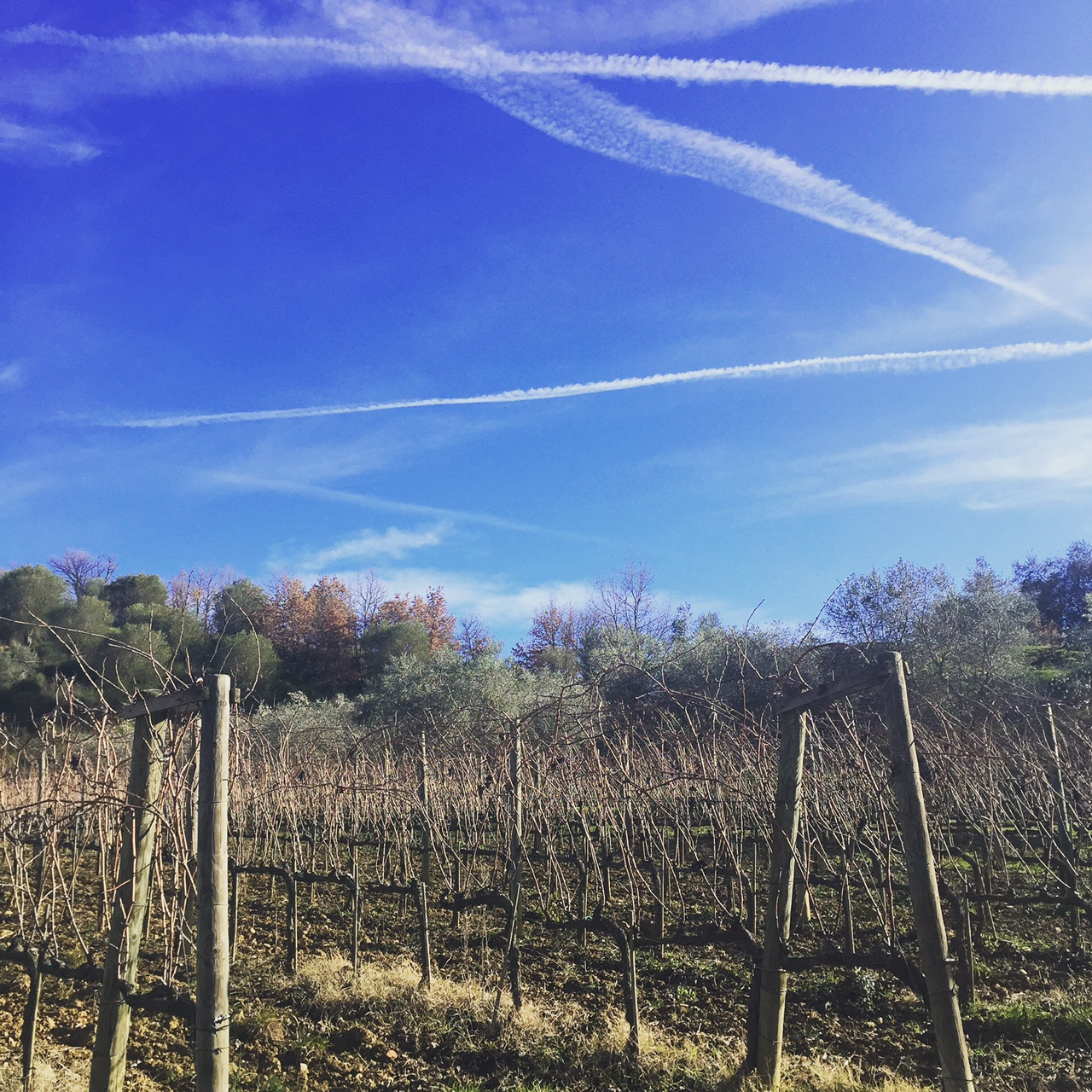
EOH: Which grape varieties have you planted at Castello di Potentino?
CH: I chose Sangiovese, Alicante and Pinot Noir as they are very site sensitive. They cannot grow everywhere and they mirror the unique characteristics of our microclimate. Now I’m most interested in what the plant does with its environment and reflecting those in each of our wines.
EOH: With pinot noir you could make a sparkling wine, a blanc de noirs similar to those made in Champagne. Would you be tempted to make a sparkling?
CH: No, the French make lots of good Champagne. I can do something different. Lyncurio, Potentino’s white wine from red pinot noir grapes, is a blanc de noirs without bubbles. My family always had a “still champagne” for Christmas and I remember Champagne swizzle sticks from the 1930s in the cupboard, which we used to get the bubbles out of the wine.
EOH: How would you describe your wines? What is it you hope they express?
CH: The area I am exploring in my wine-tasting ruminations is spatial and kinetic. How the wines feel and move in the mouth, their energy. Movement in sensation.
EOH: What would be your ideal food and wine match?
CH: I like conviviality, so a healthy glass of deep purple wine, aged pecorino and a good honest discussion is perfection for me.
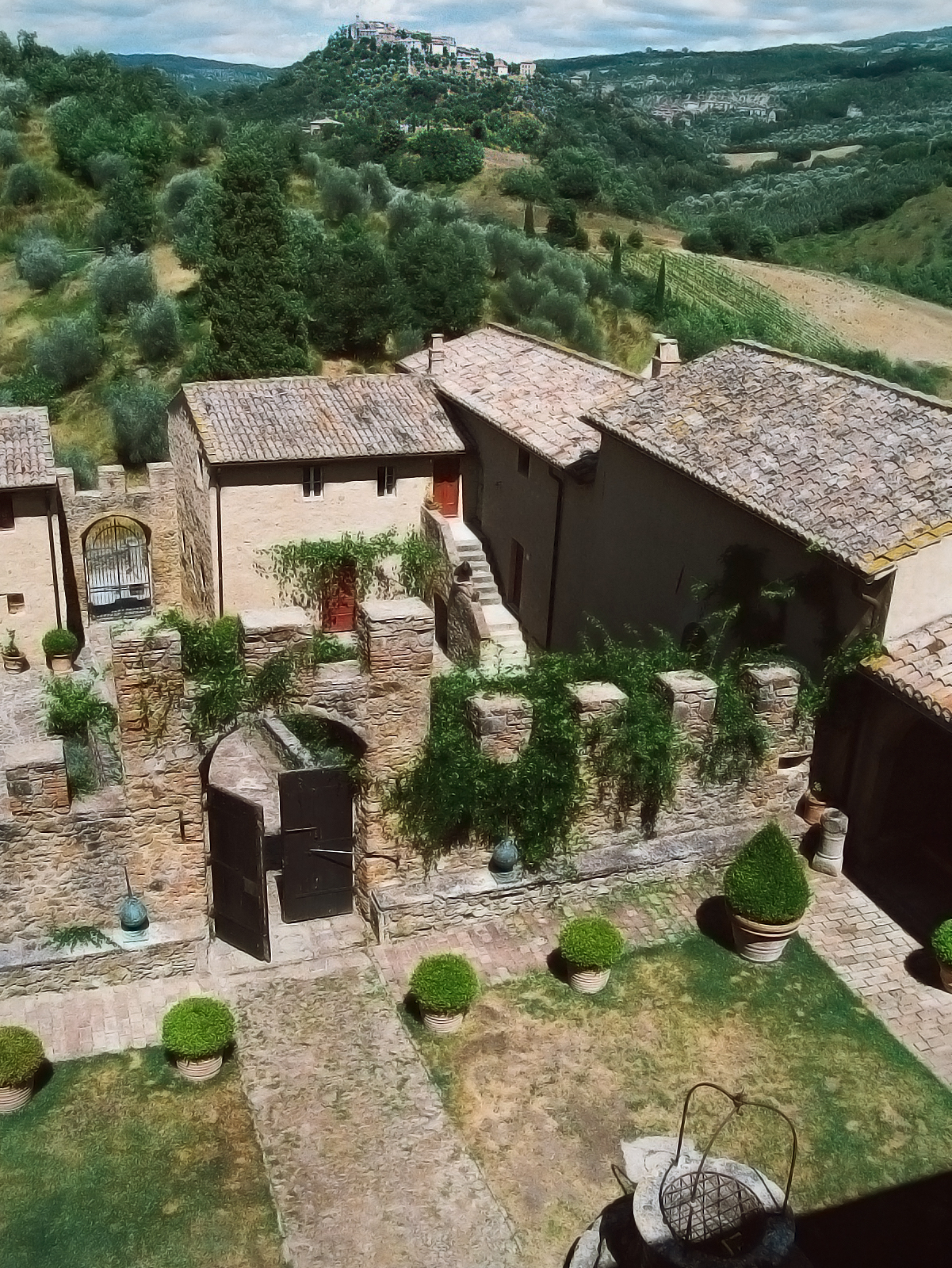
EOH: This year you began working with local and international chefs, perfumers, chocolatiers, cheesemakers, sommeliers and yogis. What is this programme?
CH: A Study of the Senses is a series of events focusing on taste and the senses to promote better hands-on knowledge of food, wine, music, colour and cooking. Mixing traditional ideas with current trends, local with global, working with creative minds, and experts in their fields from all over the world. [Emily O’Hare and Charlotte Horton will be holding a wine sense retreat, a five-day residential course of WSET wine training, food and yoga, at Castello di Potentino from June 30 to July 4, 2016. See www.cellarstylist.co.uk/events for more information.]
EOH: Is global warming a real concern?
CH: In the 30 years I’ve been living in Italy, harvest times in the Morellino area have altered by a month. It is a real concern. It’s predicted that by 2050 most of Tuscany will not be able to produce wine. The move to Moldova has already begun.
From May 12 to 15, Castello di Potentino will exhibit its design line at the fine arts and crafts exhibition Artigianato e Palazzo, held in the beautiful Corsini Gardens. For more information, visit www.artigianatoepalazzo.it and www.potentino.com.



